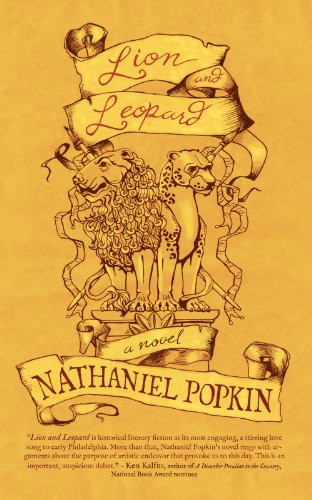Lion and Leopard
Multiple narrators combine to paint a picture of the Philadelphia art world around 1820, beginning with some young men who come to the city to write a book about American artists. They seek out Charles Willson Peale, an artist whose sons Raphaelle, Rembrandt, and Titian have all received the training to become painters themselves. A self-taught German immigrant named John Krimmel has offended the elder Peale by including the family’s monkey, Christopher Columbus, in one of his Election Day paintings, which capture the chaos of the emerging American democracy. A schismatic Quaker named Edward Hicks considers himself a sign painter, but he is producing a series of memorable paintings each called “The Peaceable Kingdom.” Other assorted characters include Joseph Bonaparte, an art collector whose brother had made him king of Naples and Sicily; an abolitionist female lawyer whom Krimmel loves; and a freedwoman prostitute and an artist who is her regular customer. These are only a few of the well-realized characters telling their own stories.
The elder Peale is attempting to establish a museum for American art in Philadelphia while also trying to build a cotton mill out of town. Will the United States evolve an art worthy of the vital young republic? Peale reluctantly recognizes the genius of young Krimmel, whose tragic drowning frames the story. Much of the action takes place on the streets of the city, presenting a window on the robust life of young America. Popkin is a historian of 19th-century Philadelphia, which explains the richly described setting. An even greater strength of the book lies in the characters, whose compelling stories unfold with intensity frequently relieved by sly humor. Highly recommended.










